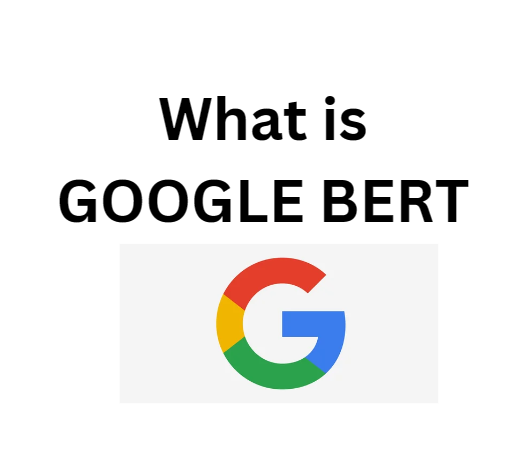Introduction
In the dynamic world of search engine optimization (SEO), staying ahead of the curve is crucial. Google, the leading search engine, continually refines its algorithms to provide users with the most relevant and contextually accurate search results. One of the most significant leaps in this regard has been the introduction of the BERT update. In this article, we’ll delve deep into Google’s BERT update, exploring what it is, why it matters, and how it has revolutionized the way search engines understand and process language.
Chapter 1: Unveiling BERT – What Is It?
1.1. Understanding BERT
BERT stands for Bidirectional Encoder Representations from Transformers. While the name might sound complex, its implications are groundbreaking. BERT is a deep learning algorithm, part of the broader transformer architecture, designed to comprehend the context and nuance of words in a sentence.
1.2. The Significance of Bidirectional Context
What sets BERT apart from its predecessors is its ability to consider the context of a word not just based on the words that come before it but also those that come after it. This bidirectional understanding allows BERT to grasp the true meaning of words in a sentence, significantly improving its ability to decipher user queries.
Chapter 2: Why BERT Matters

2.1. Contextual Understanding
Traditional search algorithms often struggled with understanding the nuances of human language. They relied heavily on keywords, which meant that a slight rephrasing of a query could yield drastically different results. BERT, on the other hand, takes into account the entire context of a sentence, making search results more precise and relevant.
2.2. Improving Natural Language Processing
The introduction of BERT marked a major leap in the field of natural language processing (NLP). BERT’s advanced understanding of context allows it to better handle conversational queries, voice searches, and even slang, bringing a more human-like dimension to search engines.
2.3. Multilingual Capability
BERT is not limited to English. Google has expanded BERT’s capabilities to understand and process languages across the globe, making it a crucial tool for global SEO efforts.
Chapter 3: BERT in Action
3.1. Impact on Search Results
The BERT update has had a profound impact on how search results are generated. It allows Google to understand the intent behind a search query, leading to more accurate and contextually relevant results.
3.2. Featured Snippets
BERT has also improved Google’s ability to present featured snippets, those bite-sized pieces of information that appear at the top of search results. These snippets are now more likely to provide precise answers to user queries.
3.3. Voice Search
With the rise of voice-activated devices like smartphones and smart speakers, BERT has become invaluable. It helps voice assistants like Google Assistant and Siri better understand and respond to spoken queries.
Chapter 4: How BERT Impacts SEO

4.1. Quality Content Is More Important Than Ever
The BERT update places a premium on high-quality, contextually relevant content. Keyword stuffing and thin, low-value content are no longer effective SEO strategies. Instead, content that genuinely addresses user intent and provides valuable information is rewarded.
4.2. Long-Tail Keywords Gain Importance
As BERT enables search engines to understand conversational queries and longer search phrases, long-tail keywords have become more crucial for SEO. Businesses must optimize their content for these detailed and specific search queries to capture highly targeted traffic.
4.3. User Experience Matters
BERT’s focus on understanding user intent means that user experience is a significant ranking factor. Slow-loading websites, poor navigation, and high bounce rates can negatively impact your SEO efforts. Providing a smooth and enjoyable user experience is essential.
Chapter 5: Tips for Optimizing for BERT
5.1. Understand User Intent
To optimize for BERT, it’s crucial to understand the intent behind user queries. Create content that answers questions, solves problems, and provides valuable insights.
5.2. Conduct Keyword Research
While long-tail keywords are important, don’t neglect short-tail keywords entirely. Conduct thorough keyword research to identify both types of keywords that align with your content.
5.3. Focus on Natural Language
Write content in a natural, conversational tone. Avoid overloading your content with keywords and prioritize readability and user-friendliness.
5.4. Monitor and Adapt
SEO is an ongoing process. Regularly monitor your website’s performance in search results, and adapt your content and strategies to align with BERT’s evolving capabilities.
Chapter 6: Tools for BERT Optimization
6.1. Google’s Natural Language API
Google offers a Natural Language API that can help you analyze and understand the sentiment and context of your content, aligning it with BERT’s requirements.
6.2. SEO Tools
Popular SEO tools like SEMrush, Moz, and Ahrefs have incorporated BERT tracking and analysis features. Use these tools to gain insights into how BERT is impacting your site’s performance.
Chapter 7: BERT’s Ongoing Evolution
7.1. Google’s Commitment to Improvement
Google remains committed to enhancing BERT and its language processing capabilities. This means that as the technology continues to evolve, its impact on SEO will also evolve. Staying updated with Google’s announcements and any BERT-related changes is crucial for maintaining a strong online presence.
7.2. Future Opportunities
While BERT has posed challenges, it has also opened up new opportunities for creative content strategies. Content creators can now explore more conversational and informative approaches to engage their audience and meet their needs better.
Chapter 8: The Broader Impact of BERT
8.1. Beyond SEO
BERT’s influence extends beyond the realm of SEO. It has applications in various fields, including chatbots, language translation, sentiment analysis, and content recommendation systems. Its ability to understand context has made it a valuable tool in natural language understanding across industries.
8.2. User-Centric Focus
BERT underscores the importance of a user-centric approach in digital marketing and content creation. Understanding what users are looking for and delivering content that genuinely addresses their needs has become paramount.
Final Thoughts
Google’s BERT update is more than just another algorithm tweak; it’s a leap forward in how search engines understand human language. It challenges content creators and digital marketers to prioritize user intent, context, and high-quality content. As technology continues to evolve, adapting to these changes becomes an integral part of achieving and maintaining online visibility. Embrace BERT, invest in understanding user needs, and craft content that not only satisfies search engine algorithms but also enriches the user experience. In this ever-evolving digital landscape, those who navigate the world of BERT effectively will stand out and thrive.
Conclusion
Google’s BERT update represents a seismic shift in the way search engines understand and process language. It has elevated the importance of context, user intent, and high-quality content in SEO. As digital marketers and website owners, it’s crucial to not only adapt to BERT but also embrace it. By optimizing your content for BERT’s contextual understanding, you can provide more valuable, relevant, and user-friendly experiences, ultimately driving better results in the ever-evolving landscape of online search.

